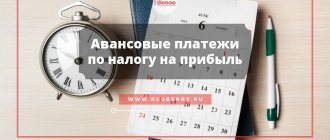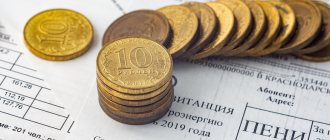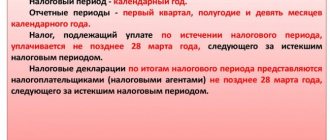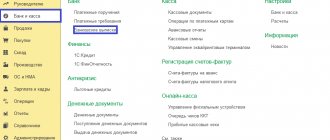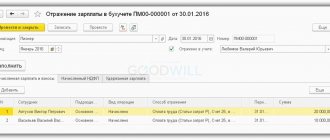Companies wishing to apply the simplified system starting next year have very little time left to submit a notification to the Federal Tax Service. And we will tell you about the peculiarities of taxation that arise during the transition from a regular taxation system to a simplified one.
Most companies that have decided to switch to a simplified taxation system from next year have already submitted a corresponding notification to the Federal Tax Service. And those who are still thinking about whether to switch or not need to hurry up: there are only a few days left until the end of the year.
So, starting from 2021, the organization decided to switch from the regular taxation regime to a simplified regime. What tax-related actions will it need to take in connection with the regime change? Let's figure it out.
If at the time of transition to the simplified tax system there are remaining inventory items
If by the beginning of next year there are still unsold goods or unused materials in the warehouse, then VAT on them will need to be restored.
And this needs to be done in the period preceding the transition to the “special regime”, that is, in the 4th quarter of 2015. This rule is contained in subparagraph 2 of paragraph 3 of Article 170 of the Tax Code of the Russian Federation. To do this, you need to “raise” the documents for the purchase of these goods and materials and ensure that the “input” VAT was included in the purchase price. If VAT was present there and was accepted for deduction, then the invoice received earlier from the supplier will need to be registered in the sales book (clause 14 of the Rules for maintaining the sales book, approved by Decree of the Government of the Russian Federation of December 26, 2011 No. 1137).
In this case, the amount of the restored tax can be included in the expenses taken into account when taxing profits in accordance with Article 264 of the Tax Code of the Russian Federation. Officials also think so (Letters of the Ministry of Finance of the Russian Federation dated 04/01/10 No. 03-03-06/1/205, dated 01/27/10 No. 03-07-14/03, dated 12/07/07 No. 03-07-11/617, Federal Tax Service in Moscow dated December 24, 2009 No. 16-15/136335).
If there are fixed assets and intangible assets on the balance sheet, the value of which by the end of the year will not be fully transferred to expenses through depreciation, then it will be necessary to restore VAT on them. In this case, the tax should be restored in proportion to the residual value of the objects and intangible assets, without taking into account revaluation. The courts also confirm the obligation to recover VAT from the residual value of fixed assets and intangible assets (Resolution of the Arbitration Court of the East Siberian District dated 08/06/2015 No. F02-4000/2015 in case No. A58-6264/2014).
Tax recovery is carried out according to the following formula:
| Amount of tax recovered for fixed assets and intangible assets | = | The amount of VAT previously accepted for deduction when purchasing fixed assets and intangible assets | X | Residual value of fixed assets and intangible assets (excluding revaluation) according to accounting data | / | Initial cost of fixed assets and intangible assets according to accounting data |
Since the amount of the restored VAT will be less than the amount reflected in the invoice for the purchase of a fixed asset (intangible asset), the invoice must be registered in the sales book for the amount of the restored tax.
This tax must be reflected in line 080 of section 3 of the VAT return for the 4th quarter of 2015. If in relation to fixed assets, intangible assets, goods and materials when purchasing them, the amount of VAT was not deducted, then the tax will not have to be restored (Letter of the Ministry of Finance of the Russian Federation dated November 5 2013 No. 03-11-11/46966).
Examples of common mistakes
Example No. 1. Court decision A50-10873/2017
The founders formally divided the LLC into 2 organizations using the simplified tax system. The organization suffered losses in the form of penalties from the Federal Tax Service of more than 40 million rubles.
Where is the mistake?
They used common labor resources, common software, and common material resources. The dependent company did not have permission to carry out the work. The companies also had an excess of the limit of employees for the special regime of the simplified tax system (more than 100), the same suppliers and buyers. After analyzing the movement of funds and interrogating employees of both companies, tax officials proved the presence of intent to evade taxes.
H3: Example No. 2. Judgment A59-2443/2017.
The construction company involved 5 interdependent companies using the simplified tax system for work under a contract. According to the court decision, the company had to pay over 226 million rubles to the budget. additional tax payments.
Where is the mistake?
The counterparties did not have their own production bases, warehouses, vehicles, etc. The construction company had accounts receivable to contractors, did not have its own working capital to pay off the debt, and also lacked its own funds for financial stability.
If you transferred the advance before switching to the simplified tax system
Many people work on prepayment.
And it may happen that you transferred the advance before switching to the simplified tax system, and you will receive goods against this advance already at the time the simplified tax system is applied. Since VAT on the transferred advance payment is deductible, the question arises: is it necessary to restore the tax when switching to the “simplified tax”? In a normal situation (when we are not talking about changing the taxation regime), VAT would be restored on the basis of subparagraph 3 of paragraph 3 of Article 170 of the Tax Code of the Russian Federation. But this subparagraph is not applicable to our situation. After all, it says that VAT must be restored in the tax period in which VAT on purchased goods (works, services) is deductible. Obviously, a “simplified” person who received goods on account of a previously paid advance will not deduct VAT on it. Since only VAT taxpayers can deduct the tax. It turns out that the future “simplified” will not have to restore VAT?
Unfortunately, there is still no official explanation from officials. Arbitration practice is also not very good. But we found one case in which a similar dispute was considered (Resolution of the Eighteenth Arbitration Court of Appeal dated September 26, 2012 No. 18AP-8284/2012 in case No. A76-4129/2012). The case was decided in favor of the tax inspectorate. The court considered that the obligation to restore VAT “follows” from subparagraph 2 of paragraph 3 of Article 170 of the Tax Code of the Russian Federation. The arbitrators were not confused by the fact that this subclause refers to the restoration of VAT exclusively on goods (works, services), fixed assets and intangible assets, and nothing is said about advances.
Thus, the safest thing from the point of view of tax risks would be to restore VAT on the listed advances. VAT will need to be restored in the 4th quarter of 2015.
As for goods (work, services) purchased at the time of application of the simplified tax system, and paid in advance before the regime change, you will take their value into account when taxing at the time of expenses (subclause 4, clause 1, article 346.25 of the Tax Code of the Russian Federation). For example, you paid the advance in December 2015, and the goods will arrive in January 2021. They will be sold, suppose, in February 2021, therefore, it is in February that you will include the cost of goods as expenses (subclause 2, clause 2, art. 346.17 Tax Code of the Russian Federation).
Special mode is not for everyone
The conditions for the transition from the OSN to the simplified tax system are established by law in the Tax Code. It is possible to change the tax system if the organization meets 2 main conditions for the revenue limit and staff size:
- number of employees is less than 100 people;
- income and residual value of fixed assets as of October 1 do not exceed 150 million rubles.
For organizations and individual entrepreneurs, the transition from the OSN to the simplified tax system is further complicated by the presence of branches, the share of participation of other companies above 25% and income over 112.5 million rubles. based on the results of 9 months before filing an application to change the tax regime.
In addition to the above, the law establishes a ban on simplifying the nature of activities for such organizations as banking, microfinance, insurance, budgetary organizations, agricultural producers, non-state pension funds, pawnshops and a number of others (more details here).
If you pay for the purchased goods after switching to the simplified tax system
Now let's consider the opposite situation.
Goods were purchased at the time of application of the OSN, and will be paid for after the transition to the “simplified” system. Do any peculiarities arise in connection with this? It all depends on whether the cost of these goods was reflected in expenses when taxing profits before the change of regime? Since the purchase price of goods is expensed as they are sold (clause 1 of Article 268 of the Tax Code of the Russian Federation), the moment of sale is important. So, if these goods are sold before the new year, then their cost will be included in expenses. This means that when you pay for the cost of these goods next year, you will not include the payment amount as expenses. Such rules follow from subparagraph 5 of paragraph 1 of Article 346.25 of the Tax Code of the Russian Federation.
And if you sell the goods next year, then the usual procedure for recognizing expenses used in the “simplified” procedure will apply. Namely: expenses for paying the cost of goods must be recognized as they are sold (subclause 2, clause 2, article 346.17 of the Tax Code of the Russian Federation).
conclusions
The tightening of tax legislation from 2021, expressed in 78 changes that also affected simplifiers, suggests that fiscal services are not going to calm down. After the release of No. 163-FZ of July 18, 2017, according to Article 54.1 of the Tax Code of the Russian Federation, the Federal Tax Service took up arms against entrepreneurs with even greater tax audits. The task of tax services is to combat business fragmentation and replenish the budget with additional funds.
The features of the transition from OSN to simplified taxation require a balanced decision. How to escape or avoid being targeted by tax inspectors? Contact MCOB. We will conduct an internal audit of accounting and organize business support. We work - you can easily develop your business!
If the advance was transferred to you before the transition to the simplified tax system
As is known, VAT must be calculated and paid on the advance received.
Then, at the time of shipment of goods against this advance payment, VAT is deducted. However, not in our case. After all, only payers of this tax can deduct VAT. And since at the time of shipment you will already be on the “simplified” tax, it is obvious that you will not be able to take advantage of the deduction. However, do not rush to get upset. You can deduct VAT calculated on advances received, provided that part of the advance (in the amount of VAT) is returned to customers. In this case, the deduction must be reflected in the last tax period preceding the month of transition to the simplified regime. This procedure follows from paragraph 5 of Article 346.25 of the Tax Code of the Russian Federation. Please note that in order to deduct VAT, a document is required indicating that the tax amount has been refunded to buyers.
But at what point should recalculations be made with customers: before or after the transition to the special regime? There are no official clarifications on this matter. We believe that in order to minimize tax risks, it is better to make recalculations in the last days of the outgoing year. If the tax is returned to buyers later than January 1, 2021, then tax authorities may indicate that the deduction is impossible due to the fact that the condition that gives the right to a deduction is met during the period of application of the simplified tax system.
Of course, such a position can be challenged by pointing out, for example, that only after January 1, 2021 can one know for sure which advances “carried over” to the next year and which were repaid in 2015. Therefore, if you return part of the advance payment in the amount of VAT next year, then, in our opinion, this should not interfere with the opportunity to receive a deduction. And if claims arise from the Federal Tax Service, you will be able to challenge them.
Some accountants, wanting to avoid such recalculations and thus not deal with the deduction of VAT, may decide at the end of the year to immediately receive advances minus VAT (if the company intends to make shipments against these advances next year). Let us immediately note that it is better not to do this. After all, the date of receipt of the advance will fall during the period of application of the OSN, which means that VAT will still have to be charged on this advance, even if it is received on December 31, 2015.
If the tax amount is not returned to buyers, then there will be no grounds for deducting VAT. This is also stated in the Letter of the Federal Tax Service dated February 10, 2010 No. 3-1-11/ [email protected]
And one more important point. You will need to include the amounts of “carryover” advances in the tax base on the date of transition, that is, January 1, 2021. In other words, at the beginning of the year you will need to tax all “carrying over” advances under the simplified tax system. Such requirements are contained in subparagraph 1 of paragraph 1 of Article 346.25 of the Tax Code of the Russian Federation.
How to prove the legality of business division?
The following actions will help you avoid additional tax assessments under OSN:
1
Organizations transferred to the simplified tax system actually existed, carried out activities, and independently paid taxes under a simplified system.
2
The optimal division of technological processes between companies will be evidence in court. The scale of business division (into 2 companies or 10) does not matter.
3
Business is not only divided between companies, but they conduct various types of business activities independently of each other, have their own management apparatus and make independent administrative decisions.
4
Newly created enterprises have their own suppliers, business partners and clients, different from the parent company, use the services of other service organizations, have personal certificates, licenses, all the necessary permits, have their own equipment and their own staff.
5
The Federal Tax Service's accusation that a group of companies (general director) has a single management cannot become grounds for deprivation of rights to a special regime.
These and other actions proposed by our company when transferring part of the business from the OSN to the simplified tax system, features
HR and management decisions for a newly created company will help you calmly conduct business without tedious lawsuits.
The transitional stage needs good legal support
, the price of which is hundreds of times lower than a possible tax penalty.
If you are paid for the shipped goods after switching to the simplified tax system
Since the shipment of goods (works, services) occurred during the period of application of the OSN, you calculated VAT on their cost.
Accordingly, the fact that the payment will be received at the time the simplified tax system is applied will not matter for VAT: the tax is calculated on the transaction. And no adjustments will need to be made. Payment received at the time of application of the simplified tax system does not need to be included in income. After all, the cost of the goods for which payment is received has already been included in the income tax base at the time of sale. The fact that payment for “last year’s” supplies does not need to be subject to tax paid to the simplified tax system is directly stated in subparagraph 3 of paragraph 1 of Article 346.25 of the Tax Code of the Russian Federation.
Thus, next year you need to check each payment to see if it relates to “last year’s” deliveries” (and not included in income) or current (and included in income).
Types of taxation systems
The Tax Code of the Russian Federation does not distinguish OSNO as a separate taxation regime. It is used by all legal entities and individual entrepreneurs, unless they have declared the choice of other modes. There are no restrictions for OSNO: the number of personnel, the amount of income or the specifics of the activity do not matter.
The general system assumes:
- paying taxes to the maximum;
- Full accounting management.
The simplified tax system refers to special tax regimes, is applied voluntarily and allows you not to pay (clauses 2, 3 of article 346.11 of the Tax Code of the Russian Federation):
- corporate income tax (or personal income tax for individual entrepreneurs);
- property tax (except for that calculated based on cadastral value);
- VAT (except import).
The calculation of payment according to the simplified tax system depends on the object of taxation:
- 6% of income;
- 15% of income reduced by expenses.
Abandoning the OSNO in favor of the simplified tax system is a guaranteed method of legally being able to pay less tax payments.

